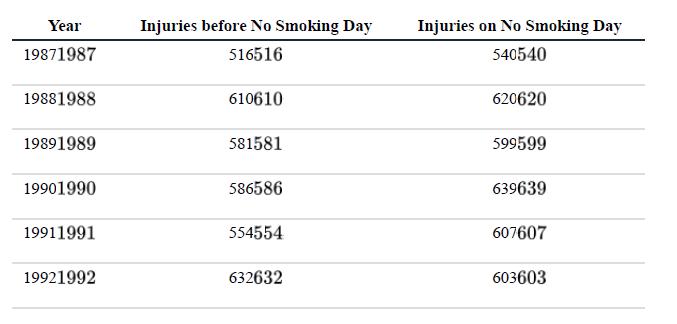Every year Britain has a No Smoking Day, when many people voluntarily stop smoking for a day.
Question:
Every year Britain has a No Smoking Day, when many people voluntarily stop smoking for a day. No Smoking Day occurs on the second Wednesday of March each year. Waters et al. (1998) used this event to investigate the influence of stopping smoking on nonfatal injuries on the job. They compared the injury rate each year on the Wednesday of No Smoking Day to the rate for the previous Wednesday of the same year. The idea was that this comparison would control for many of the other factors that affect injury rate, such as year, time of week, and so on. The data from 1987 to 1996 (number of injuries in one day) are listed in the following table:


a. How many more or fewer injuries are there on No Smoking Day, on average, compared with the normal day?
b. What is the 99% confidence interval for this difference?
c. In your own words, explain what the 99% confidence interval means.
d. A change of less than 20 would be a modest effect, whereas a change of 20 or more injuries would constitute a large benefit or cost to No Smoking Day. Using the confidence interval, are the data consistent with a modest effect on injuries of No Smoking Day?
e. Test whether the accident rate changes on No Smoking Day.
Step by Step Answer:

The Analysis Of Biological Data
ISBN: 9781319226237
3rd Edition
Authors: Michael C. Whitlock, Dolph Schluter





